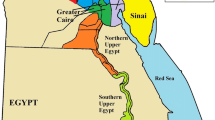Abstract
We derive formulae for the fixation probability, P, of a rare benefical allele segregating in a population of fixed size which reproduces by binary fission, in terms of the selection coefficient for the beneficial allele, s. We find that an earlier result P ≃ 4s does not depend on the assumption of binary fission, but depends on an assumption about the ordering of events in the life cycle. We find that P ≃ 2s for mutations occurring during chromosome replication and P ≃ 2.8s for mutations occurring at random times between replication events.
Similar content being viewed by others
References
Bartlett, M., 1955. An Introduction to Stochastic Processes. Cambridge University Press, Cambridge.
Barton, N.H., 1995. Linkage and the limits to natural selection. Genetics 140: 821–841.
Barton, N.H. & M.C. Whitlock, 1997. The evolution of metapopulations, pp. 183–210 in Metapopulation Biology, edited by I.A. Hanski & M.E. Gilpin. Academic Press, New York.
Berg, O.G., 1995. Periodic selection and hitchhiking in a bacterial population. J. Theor. Biol. 173: 307–320.
Dykhuizen, D.E., 1990. Experimental studies of natural selection in bacteria. Annu. Rev. Ecol. Syst. 21: 373–398.
Ewens, W.J., 1967. The probability of survival of a new mutant in a fluctuating environment. Heredity 22: 438–443.
Fisher, R.A., 1922. On the dominance ratio. Proc. Roy. Soc. Edinburgh 52: 399–433.
Fisher, R.A., 1930. The Genetical Theory of Natural Selection. Clarendon Press, Oxford.
Gerrish, P.J. & R.E. Lenski, 1998. The fate of competing beneficial mutations in an asexual population. Genetica 102/103: 127–144.
Gillespie, J.H., 1991. The Causes of Molecular Evolution. Oxford University Press, Oxford.
Gillespie, J.H., 2000. Random drift in an infinite population: the pseudohitchhiking model. Genetics 155: 909–919.
Haldane, J.B.S., 1927. A mathematical theory of natural and artificial selection. V. Selection and mutation. Proc. Cambridge Philos. Soc. 23: 838–844.
Hartl, D.L. & C.H. Taubes, 1998. Towards a theory of evolutionary adaptation. Genetica 102/103: 525–533.
Hill, W.G. & J. Rasbash, 1986. Models of long-term artificial selection in finite population with recurrent mutation. Genet. Res. 48: 125–131.
Huai, H. & R.C. Woodruff, 1998. Clusters of new identical mutants and the fate of underdominant mutations. Genetica 102/103: 489–505.
Imhof, M. & C. Schlötterer, 2001. Fitness effects of advantageous mutations in evolving Escherichia coli populations. Proc. Natl. Acad. Sci. USA 98: 1113–1117.
Kimura, M. & T. Ohta, 1970. Probability of fixation of a mutant gene in a finite population when selective advantage decreases with time. Genetics 65: 525–535.
Maruyama, T., 1971. An invariant property of a structured population. Genet. Res. 18: 81–84.
Miralles, R., P.J. Gerrish, A. Moya & S.F. Elena, 1999. Clonal interference and the evolution of RNA viruses. Science 285: 1745–1747.
Nagylaki, T., 1982. Geographical invariance in population genetics. J. Theor. Biol. 99: 159–172.
Orr, H.A., 2000. The rate of adaptation in asexuals. Genetics 155: 961–968.
Otto, S.P. & M.C. Whitlock, 1997. The probability of fixation in populations of changing size. Genetics 146: 723–733.
Pineda-Krch, M. & T. Fagerström, 1999. On the potential for evolutionary change in meristematic cell lineages through intraorganismal selection. J. Evol. Biol. 12: 681–688.
Schaffer, H.E., 1970. Survival of mutant genes as a branching process, pp. 317–336 in Mathematical Topics in Population Genetics, edited by K.-i. Kojima. Springer, Berlin.
Wahl, L.M. & P.J. Gerrish, 2001. The probability that beneficial mutations are lost in populations with periodic bottlenecks. Evolution 55: 2606–2610.
Woodruff, R.C. & J.N. Thompson Jr., 1992. Have premeiotic clusters of mutations been overlooked in evolutionary theory? J. Evol. Biol. 5: 437–464.
Author information
Authors and Affiliations
Rights and permissions
About this article
Cite this article
Johnson, T., Gerrish, P.J. The Fixation Probability of a Beneficial Allele in a Population Dividing by Binary Fission. Genetica 115, 283–287 (2002). https://doi.org/10.1023/A:1020687416478
Issue Date:
DOI: https://doi.org/10.1023/A:1020687416478




